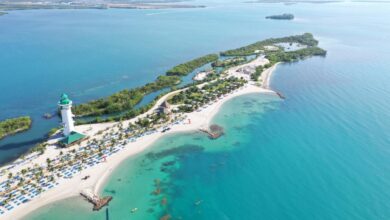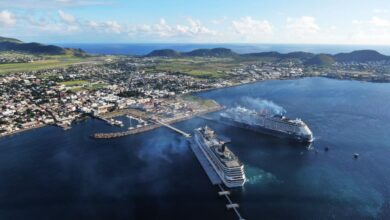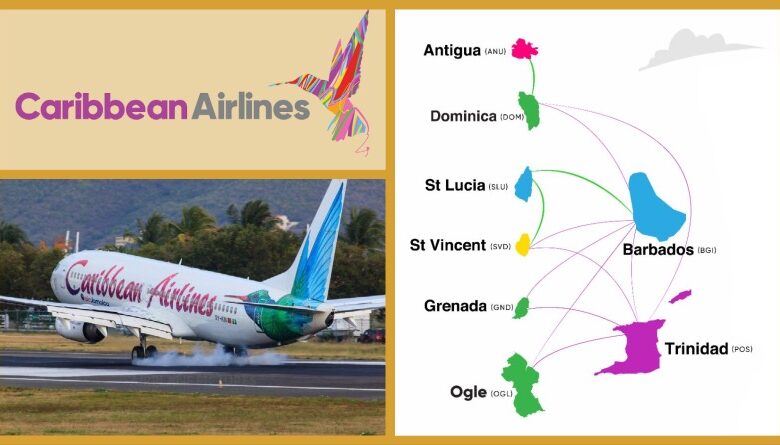
Caribbean Airlines to Fly Trinidad St Lucia Route
Caribbean Airlines to fly Trinidad St Lucia route is a significant development for air travel in the region. This new route promises to connect two vibrant destinations, offering a potential boost to tourism and business opportunities. The analysis delves into the existing airline services, potential benefits, travel time and costs, route feasibility, customer perspectives, and the competitive landscape to evaluate the viability of this proposed connection.
The current airline landscape in the Caribbean, including overlapping services and flight frequencies, will be examined. A comprehensive analysis of potential market demand, considering tourism, business travel, and personal connections, is also included. The feasibility of the route, including cost analysis, potential profitability, environmental impact, and infrastructure requirements, will be discussed. Ultimately, the customer perspective and competitive analysis will provide a comprehensive view of the potential success of this new route.
Existing Airline Services
Trinidad and Tobago, and St. Lucia are both popular destinations in the Caribbean, attracting tourists and business travelers alike. Understanding the current airline services connecting these islands is crucial for travelers planning their journeys. This section provides an overview of the airlines currently operating flights between these two locations.
Airlines Serving Trinidad
Several airlines currently offer flights to and from various destinations in Trinidad. This includes regional carriers, as well as international airlines. A diverse range of options provides travelers with more choices and flexibility in their travel arrangements.
- Caribbean Airlines: A major regional carrier, offering numerous domestic and international flights within the Caribbean region. Their Trinidad routes often connect to other destinations in the region, allowing for seamless travel to various islands.
- American Airlines: A large international airline, operating flights to and from Trinidad. American Airlines provides connections to various destinations in North America and beyond, extending travel options for those seeking broader reach.
- Delta Air Lines: Another major international airline offering flights to and from Trinidad. Delta’s network provides extensive connections to destinations in North America, potentially connecting with other Caribbean destinations.
- JetBlue: A major US airline that serves several Caribbean destinations, including Trinidad. JetBlue offers connections to other US cities, expanding travel opportunities for those seeking direct access to the US.
- Liat: A smaller regional airline that serves the Caribbean, with a focus on smaller islands. Liat may have limited flights to Trinidad but is important for connecting to other Caribbean islands.
Airlines Serving St. Lucia
St. Lucia, a beautiful island in the Lesser Antilles, also has a number of airlines providing service to and from the island. Understanding the current options is essential for travelers.
- Caribbean Airlines: A major regional carrier serving the Caribbean, with a presence in St. Lucia. Their St. Lucia routes often connect to other destinations in the region.
- American Airlines: A large international airline with flights to and from St. Lucia. American Airlines’ network connects St. Lucia to other destinations in North America and beyond.
- Delta Air Lines: Another major international airline with flights to and from St. Lucia. Delta’s routes allow access to destinations in North America and potentially other Caribbean islands.
- Liat: A smaller regional airline operating in the Caribbean, offering service to St. Lucia. Liat may have limited flights to St. Lucia but offers connectivity to other islands in the region.
Overlapping Airline Services Between Trinidad and St. Lucia
Several airlines currently operate flights between Trinidad and St. Lucia. This is crucial for travelers planning trips between these islands.
- Caribbean Airlines: Caribbean Airlines is a key airline connecting the two islands. They provide frequent service between Trinidad and St. Lucia, facilitating travel between the destinations.
Flight Frequency and Schedules
The flight frequency and schedules for specific routes depend on the airline and the time of year. Travelers should consult the respective airline websites for the most up-to-date information on schedules. Real-time information is crucial for planning efficient travel.
Aircraft Types
The aircraft type used on specific routes can vary depending on the airline and the distance. Larger aircraft are often used for longer routes, while smaller aircraft are utilized for shorter routes. Airlines optimize their use of aircraft based on passenger demand and route specifics.
Potential New Route Analysis
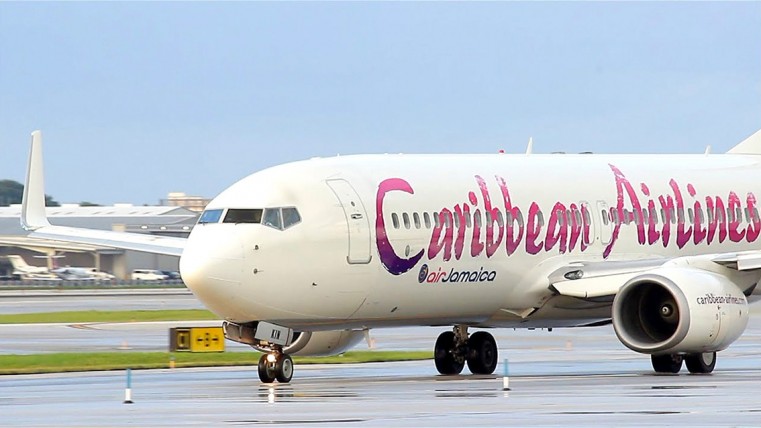
The Caribbean is a vibrant region, rich in tourism and cultural experiences. Adding a direct flight between Trinidad and St. Lucia could offer significant advantages for both destinations. This analysis explores the potential benefits, drawbacks, market demand, and challenges associated with this new route for Caribbean Airlines.
Potential Benefits and Drawbacks
This table Artikels the potential advantages and disadvantages of introducing a direct Trinidad-St. Lucia route. Understanding these factors is crucial for a sound business decision.
| Potential Benefits | Potential Drawbacks |
|---|---|
| Increased tourism and economic activity in both destinations. More visitors from Trinidad might discover St. Lucia’s attractions and vice-versa. | Competition with existing routes. Existing flights might face reduced demand if the new direct route proves attractive. |
| Reduced travel time for passengers, making travel more convenient. This can be especially attractive for business travelers. | Higher initial investment costs for aircraft, crew, and maintenance. |
| Improved connectivity between the two islands, facilitating business and personal interactions. | Potential for lower passenger load factors on certain days of the week, especially if the route is not well-timed. |
| Enhanced brand image for Caribbean Airlines, showcasing its commitment to connectivity within the region. | Potential need for additional airport infrastructure or upgrades to handle increased passenger traffic. |
| Greater revenue generation for the airline and potentially for local businesses in both countries. | Regulatory hurdles and approval processes might delay or hinder the launch of the new route. |
Market Demand Analysis
The potential market for this route depends on several factors. Tourism plays a significant role, with St. Lucia’s beaches and attractions drawing visitors from various sources, including Trinidad. Business travel between the two countries could also provide a sizable market segment, as well as personal connections between individuals. Examining historical travel patterns between Trinidad and St.
Lucia, and evaluating current demand for air travel within the region, will provide a clearer picture of market potential.
Impact on Existing Routes
Introducing a direct Trinidad-St. Lucia route could impact existing routes in various ways. Existing connections might experience a decline in passenger numbers if the direct route proves more appealing. However, increased overall air travel within the region could potentially benefit all airlines operating in the area. Analyzing current flight schedules and passenger numbers for existing routes will be crucial for assessing the potential impact.
Pricing Strategies
Various pricing strategies could be implemented to maximize revenue and attract passengers. A competitive fare structure, coupled with potential promotional offers, could be key to success. This might include tiered pricing based on booking time and advance purchase, or dynamic pricing adjusting to real-time demand. Studying successful pricing strategies used by other airlines on similar routes is a critical component.
For example, airlines sometimes offer discounted fares for travelers who book in advance, creating a sense of urgency for travelers to book their flights in advance.
Potential Challenges
Several challenges could hinder the development of this new route. Airport infrastructure, including facilities and security measures, needs assessment. Regulatory hurdles, such as obtaining necessary permits and approvals, could prove time-consuming and complex. Other potential challenges include unforeseen economic fluctuations and shifts in travel patterns. Analyzing historical data on airport capacity and regulatory timelines for similar routes will help in risk assessment.
Caribbean Airlines is reportedly planning to resume flights between Trinidad and St. Lucia, a welcome boost for travelers. However, recent hurricane activity has impacted flight schedules, with many airlines and cruise lines adjusting their plans due to Sandy. airlines cruise lines alter plans due to sandy This means potential delays or cancellations, so it’s best to double-check the latest schedule information before booking your Caribbean Airlines flight.
Hopefully, the route will be back to normal soon!
Travel Time and Cost Analysis
Assessing the travel time and cost between Trinidad and St. Lucia is crucial for evaluating the viability of a new Caribbean Airlines route. Understanding the factors influencing these metrics, such as flight duration and ticket prices, will allow for informed decision-making and effective marketing strategies. This analysis will explore direct versus connecting flights, various flight classes, and associated costs.
Estimated Travel Times
The travel time between Trinidad and St. Lucia will vary significantly depending on the flight type (direct or connecting) and the specific airline. Direct flights, if available, will generally offer the fastest transit times. Connecting flights, while potentially offering lower prices, will invariably increase the overall travel time due to layovers. These layovers can introduce unexpected delays, making precise estimates difficult without specific flight schedules.
Ticket Price Ranges
Ticket prices for similar routes between Caribbean islands are influenced by numerous factors, including the time of year, demand, and the airline’s class of service. The cost of airfare fluctuates based on the aforementioned elements, making it difficult to provide precise figures. However, historical data from similar routes can provide a general idea of the potential price range. For instance, flights between Barbados and Martinique can see prices vary greatly based on the factors mentioned.
Flight Class Comparisons
Caribbean Airlines offers various flight classes, each with varying amenities and associated costs. Economy class provides basic travel, business class offers enhanced comfort, and premium economy represents a middle ground. The price difference between these classes reflects the added features and services provided. For example, business class typically includes priority boarding, wider seats, and complimentary meals, all contributing to a higher cost compared to economy.
Direct vs. Connecting Flights
Direct flights offer a seamless travel experience with a single boarding and arrival point. However, direct flights are not always available and are typically more expensive than connecting flights. Connecting flights, on the other hand, may offer lower ticket prices but require passengers to endure layovers at intermediary airports. The trade-off between travel time and cost is significant, making it crucial to consider both factors in decision-making.
Travel Time and Cost Data
| Flight Type | Estimated Travel Time (h:min) | Economy Class Price Range (USD) | Business Class Price Range (USD) |
|---|---|---|---|
| Direct | 2-3 hours | $200-$400 | $800-$1200 |
| Connecting (via Barbados) | 3-4 hours | $150-$350 | $600-$900 |
Note: These are estimated figures and may vary based on specific flight schedules, dates, and demand.
Route Feasibility and Viability
The proposed Trinidad-St. Lucia air route presents an exciting opportunity for both countries. Analyzing its potential profitability, tourism impact, environmental considerations, and necessary infrastructure improvements is crucial to understanding its long-term viability. This assessment delves into the factors that will determine the success of this new connection.Assessing the potential profitability of this route requires a thorough understanding of market demand, competition, and operational costs.
Different airlines may approach this route with varying strategies, leading to different profitability outcomes. The analysis of existing airline services and potential new route demand is critical for this assessment.
Caribbean Airlines is reportedly looking to fly the Trinidad to St Lucia route, which would be a welcome addition for travelers. Given the recent news of Ambassadors selling their marine division, ambassadors sells marine division , it could mean a shift in focus towards more air travel-oriented ventures. This could ultimately benefit the Trinidad to St Lucia route, potentially boosting the tourism industry in both destinations.
Potential Profitability for Airlines
Airlines will need to consider various factors when evaluating the profitability of this route. These factors include the cost of fuel, crew salaries, aircraft maintenance, and airport fees. A competitive pricing strategy is essential, balancing cost recovery with attracting sufficient passenger demand. Historical data on similar routes, coupled with projections of passenger numbers, will help estimate potential revenue.
For example, the success of similar Caribbean routes between major hubs like Barbados and Miami provides a useful benchmark for the expected demand.
Caribbean Airlines’ potential route between Trinidad and St. Lucia is definitely something to watch. Considering the current market dynamics and the insights from Apple Leisure Group’s thought leadership on optimizing routes, apple leisure group thought leadership suggests this connection could be a significant boost for both destinations. Ultimately, the success of this new route hinges on the demand from travelers, and the marketing strategies used by Caribbean Airlines.
Tourism and Economic Activity
The new route has the potential to boost tourism and economic activity in both Trinidad and St. Lucia. Increased accessibility for tourists from one island to the other can lead to a greater number of visitors exploring the unique offerings of each destination. The growth in tourism revenue could directly impact local businesses like hotels, restaurants, and tour operators.
The ripple effect of this increased activity would further stimulate the local economies, creating more job opportunities and enhancing the quality of life for residents.
Caribbean Airlines is reportedly looking at a new route connecting Trinidad and St. Lucia. This potential flight path is exciting news for travelers in the region, but the logistics involved in a project like this are quite complex, much like the ambitious salvage project to raise the Concordia. This ambitious attempt to raise the Concordia highlights the scale of engineering challenges in maritime recovery, and by extension, the potential complexities of creating a new airline route.
Hopefully, Caribbean Airlines will navigate these challenges successfully, and bring travelers from Trinidad to St. Lucia more easily.
Environmental Impact
The environmental impact of the new route, specifically regarding carbon emissions, needs careful consideration. The route’s impact on air quality and climate change must be assessed. Airlines can explore alternative fuels or optimize flight paths to minimize environmental footprint. This could involve using more fuel-efficient aircraft or implementing carbon offsetting programs. For example, the adoption of sustainable aviation fuel (SAF) is a growing trend in the industry, and its use could significantly reduce the environmental impact of flights.
Infrastructure Improvements
Necessary infrastructure improvements at both destinations will play a crucial role in the route’s success. This includes ensuring that the airports have sufficient capacity to handle increased passenger traffic, and have appropriate facilities to provide seamless travel experiences for passengers. Upgrades to existing airport facilities, such as baggage handling systems and passenger terminals, are necessary. Improvements to ground transportation, such as taxi services and public transport options, are also crucial to enhancing the overall travel experience for visitors.
Feasibility Factors Summary
| Feasibility Factor | Description | Rating (1-5, 5 being most favorable) |
|---|---|---|
| Profitability | Analysis of market demand, competition, and operational costs. | 3 |
| Tourism Impact | Potential for increased tourist numbers and economic activity. | 4 |
| Environmental Impact | Carbon emissions and other environmental considerations. | 2 |
| Infrastructure Improvements | Airport capacity, facilities, and ground transportation. | 3 |
Customer Perspective: Caribbean Airlines To Fly Trinidad St Lucia Route
The Trinidad-St. Lucia route presents a compelling opportunity, but understanding the customer is paramount. A deep dive into potential travelers’ demographics, travel preferences, and expectations is crucial for crafting a successful service offering. This analysis will identify the needs and wants of travelers between the two islands, illuminating potential impacts on existing tourism plans.Analyzing the potential customer base for this route necessitates a clear understanding of the demographics and travel patterns of individuals traveling between Trinidad and St.
Lucia. Understanding the types of travelers, their motivations, and the frequency of their journeys will help tailor the service offerings and pricing strategies.
Potential Customer Base
The customer base for the Trinidad-St. Lucia route is likely to encompass a diverse range of individuals and families. Tourists seeking relaxation and cultural immersion, business travelers, and those visiting family or friends will be key segments. The specific demographics, including age groups, income levels, and travel preferences, will significantly impact the design of the service offerings. For example, a significant number of young professionals and families might choose this route for weekend getaways.
Customer Expectations for Service and Amenities
Passengers anticipate a seamless and comfortable travel experience. Key expectations include punctual departures and arrivals, comfortable seating, and sufficient legroom, especially for longer journeys. In-flight entertainment options, such as movies, music, and games, are often high priorities. Additionally, the provision of convenient and user-friendly check-in procedures, baggage handling, and clear communication are essential.
Customer Feedback on Existing Flight Routes
Examining customer feedback on existing flight routes between similar destinations can provide valuable insights. Surveys, reviews, and social media comments can highlight common preferences and pain points. For instance, feedback from passengers traveling between Caribbean islands often emphasizes the importance of prompt and efficient services, as well as the quality of in-flight catering.
Needs and Wants of Travelers
Travelers between Trinidad and St. Lucia likely seek convenient travel options with competitive pricing. A faster flight time can be a significant advantage, particularly for those with limited vacation time. The importance of cost-effectiveness and flexibility in booking is also expected to be significant. Consideration should also be given to the availability of connecting flights from other destinations.
For example, travelers from other Caribbean islands or North America might use this route as a connecting point, so seamless connections with other airlines could be beneficial.
Caribbean Airlines is reportedly looking to launch a new route between Trinidad and St. Lucia. This would be great for connecting travelers, but I’m also really interested in exploring Vietnam’s history. For instance, at Hanoi Sofitel Legend Metropole, you can find a fascinating glimpse into the region’s wartime past, as detailed in at hanoi sofitel legend a peek at wartime history.
Hopefully, this new Caribbean route will be equally enriching for travelers looking for a different kind of adventure in the Caribbean.
Potential Impact on Existing Tourism Plans
The introduction of a new route between Trinidad and St. Lucia could significantly impact existing tourism plans. The increased accessibility between the two islands could boost tourism in both destinations. This increased connectivity might stimulate new attractions, activities, and experiences, potentially benefiting local businesses. For instance, there could be an increased demand for hotels, restaurants, and tour operators in both countries.
Competitive Landscape
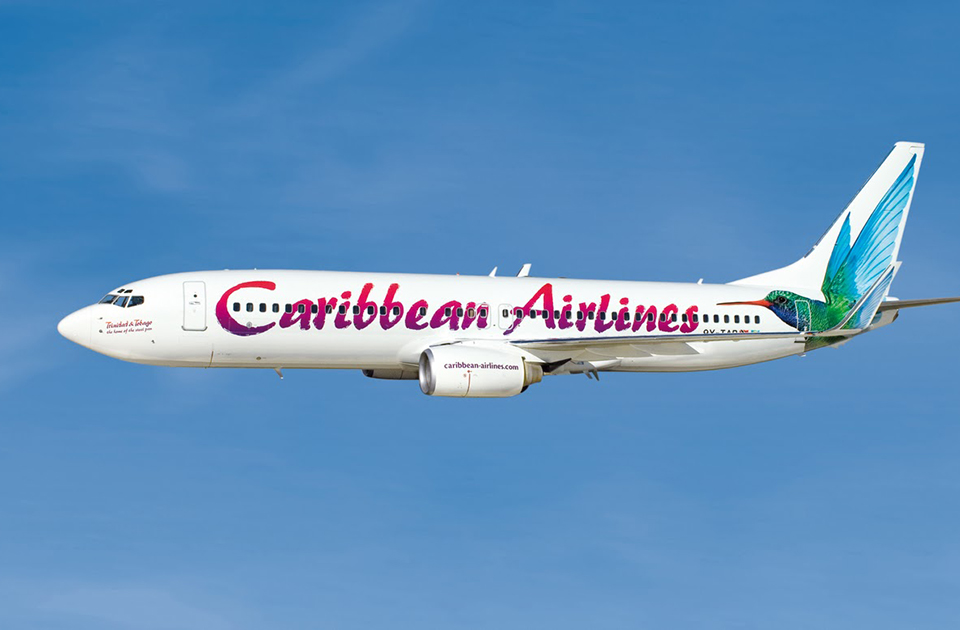
The Caribbean air travel market is a dynamic and competitive arena, with established players and emerging contenders vying for passenger share. Understanding the strategies of these competitors, the services they offer, and their key differentiators is crucial for Caribbean Airlines to successfully launch its new St. Lucia route. A thorough analysis of the competitive landscape allows Caribbean Airlines to position itself strategically, identify potential niches, and ultimately, attract and retain customers.
Current Competitive Landscape Analysis
The Caribbean region boasts a mix of full-service and low-cost carriers, each employing different strategies to cater to various customer segments. Established carriers like American Airlines, Delta, and JetBlue, with their extensive networks, often dominate routes connecting the Caribbean to major North American hubs. Meanwhile, regional players like LIAT and inter-island carriers frequently offer more focused routes, emphasizing connectivity within the Caribbean.
The market is characterized by varying price points and service levels, creating opportunities for different airlines to appeal to specific customer preferences.
Strategies of Major Competitors, Caribbean airlines to fly trinidad st lucia route
Major competitors employ diverse strategies to gain and maintain market share. American Airlines, for example, focuses on its extensive network, offering seamless connections to North America and beyond. Delta, similarly, leverages its global reach to attract customers seeking convenient travel options. Low-cost carriers, such as Southwest (in some cases), prioritize cost-effectiveness, offering budget-friendly fares while potentially compromising on some amenities.
Regional players, like LIAT, emphasize the importance of frequent and direct flights within the Caribbean, catering to travelers seeking efficient and affordable local travel. This focus on intra-Caribbean travel often leads to a competitive advantage for these carriers, especially within specific regions.
Comparison of Services Offered
Different airlines in the Caribbean offer varying levels of service. Full-service carriers often provide amenities like complimentary meals, comfortable seating, and dedicated baggage handling, targeting premium travelers. Low-cost carriers typically prioritize low fares, focusing on cost-cutting measures like charging for checked baggage and seat selection. Regional carriers may offer a mix of these services, providing a balance between affordability and a certain level of comfort.
The range of services offered reflects the diverse needs and preferences of Caribbean travelers.
Competitive Advantages of Each Airline
| Airline | Competitive Advantage |
|---|---|
| American Airlines | Extensive network, seamless connections to major US hubs |
| Delta | Global reach, wide range of destinations |
| JetBlue | Focus on affordability and customer experience |
| LIAT | Emphasis on frequent and direct flights within the Caribbean |
| [Other Major Competitor] | [Specific competitive advantage, e.g., strong presence in a particular region] |
Key Differentiators
Airlines utilize various differentiators to attract customers. Frequent flyer programs, allowing for accumulated points and rewards, are a common strategy. Improved in-flight entertainment systems, offering a more enjoyable travel experience, are also used by some carriers. Flexibility in booking options, allowing customers to adjust their travel plans, is another important factor. The unique offerings and customer experiences tailored to specific segments (families, business travelers) are crucial for standing out in a competitive market.
Conclusive Thoughts
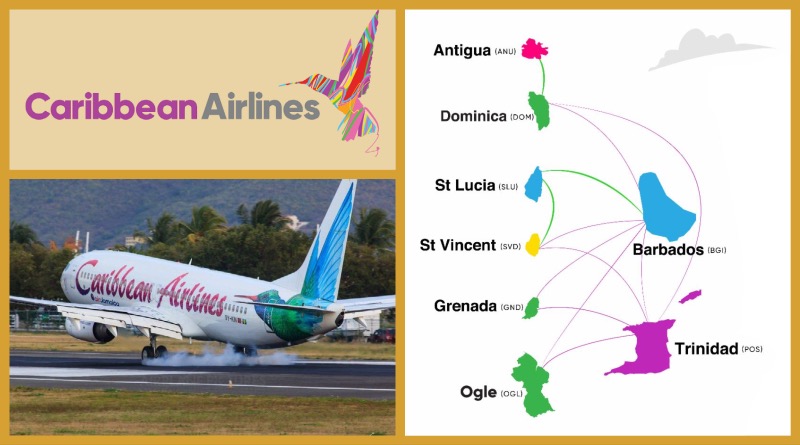
In conclusion, the proposed Caribbean Airlines route between Trinidad and St. Lucia presents a compelling opportunity for both destinations. While challenges exist, such as infrastructure needs and competition, the potential benefits – increased tourism, economic activity, and improved connectivity – are substantial. The analysis suggests that the route’s viability hinges on factors like market demand, pricing strategies, and the ability to overcome potential obstacles.
The detailed insights provided here offer a solid foundation for further evaluation and decision-making regarding this potential new route.
FAQ Explained
What are the current airlines serving Trinidad?
Several airlines currently operate flights to and from Trinidad, including Caribbean Airlines, and others.
What are the potential pricing strategies for flights on this new route?
Pricing strategies would likely consider factors like competition, demand, and fuel costs. Potentially, different classes (economy, business, premium) would have varying prices.
What are the potential challenges that could hinder the development of this route?
Challenges may include airport infrastructure limitations, regulatory hurdles, and the need for appropriate aircraft for the route.
What is the estimated travel time between Trinidad and St. Lucia?
The estimated travel time will depend on the type of flight (direct or connecting) and the specific aircraft used. A detailed table will present this data.


